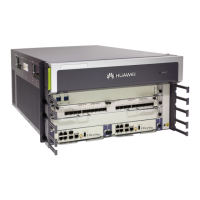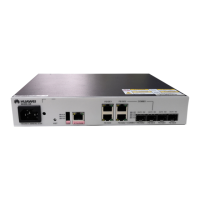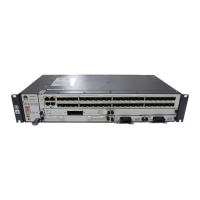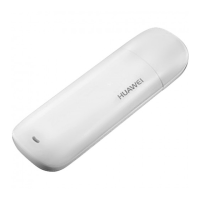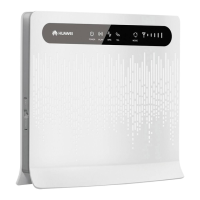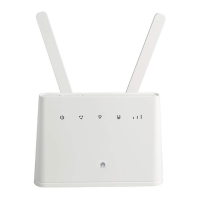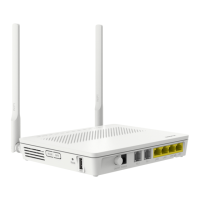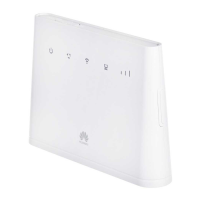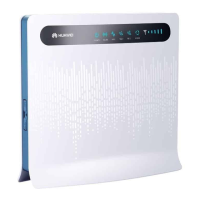1. Determine the length of ber jumpers based on the onsite cabling distance.
2. Determine the ber type based on the optical module type.
– Use a multimode ber jumper for a multimode optical module.
– Use a single-mode
ber jumper for a single-mode optical module.
3. Determine the optical connector type based on the port type.
Ensure that the optical connector at each end of a
ber jumper is the same
type as the port to which it will be connected.
The optical transmission module of the multi-transverse mode needs to be
connected to the multi-mode
ber. The optical transmitting module in single-
longitudinal or multi-longitudinal mode needs to be connected to the single-
mode ber.
Optical Fiber
Optical
bers are classied into single-mode bers and multimode bers.
● Single-mode bers have a diameter of 5 μm to 10 μm and transmit laser in
one mode under a
specied wavelength. These bers support a wide
frequency band and a large transmission capacity, so they are used for long-
distance transmission. Most single-mode bers are yellow, as shown in Figure
3-72.
● Multimode
bers have a diameter of 50 μm or 62.5 μm and transmit laser in
multiple modes with a
specied wavelength. These bers have a lower
transmission capacity than single-mode bers and are used for short-distance
transmission. Model dispersion occurs during transmission over multimode
bers.
In the latest cabling infrastructure of ISO/IEC 11801, multimode bers are
classied into four categories: OM1, OM2, OM3, and OM4.
– OM1: traditional 62.5 μm/125 μm multimode bers. OM1 bers have a
large core diameter and numerical aperture, and provide high light
gathering ability and bending resistance.
– OM2: traditional 50 μm/125 μm multimode
bers. OM2 bers have a
small core diameter and numerical aperture. Compared with OM1 bers,
OM2 bers provide higher bandwidth because they signicantly reduce
the modal dispersion. When transmitting data at 1 Gbit/s with 850 nm
wavelength, OM1 and OM2
bers support maximum link lengths of 220
m and 550 m, respectively. OM1 and OM2 bers can provide sucient
bandwidth within a distance of 300 m. Generally, OM1 and OM2 bers
are orange, as shown in Figure 3-73.
– OM3: new-generation multimode bers, with longer transmission
distances than OM1 and OM2
bers.
– OM4: laser optimized multimode bers with 50 μm core diameter. OM4
is an improvement to OM3 and only increases the modal bandwidth.
OM4
bers provide 4700 MHz*km of modal bandwidth, whereas OM3
bers provide only 2000 MHz*km of modal bandwidth. Generally, OM3
and OM4
bers are light green, as shown in Figure 3-74. You can identify
OM3 and OM4 bers by their labels or printed marks.
HUAWEI NetEngine 8000 F
Hardware Guide 3 Hardware Description
Issue 05 (2023-03-31) Copyright © Huawei Technologies Co., Ltd. 332

